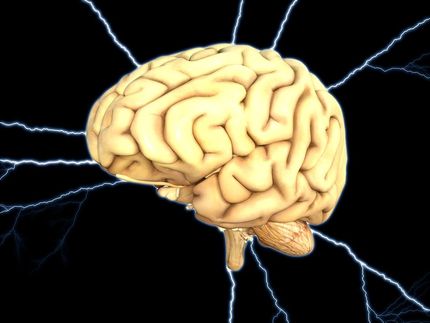Smartphone thumb skills are altering our brains
Typing, sweeping, swiping – Smartphone users have nimble thumbs and forefingers. However, it is not only finger dexterity that the daily use of mobile technology develops. As researchers from the Universities of Zurich and Fribourg demonstrate, it also alters the brain. The cortex quickly adapts to these repetitive finger movements, proving once again just how plastic our brains are.
Every region of the body – from the toes to the jaw and tongue – has a particular processing area in our emotional center in the brain, the somatosensory cortex. These areas are flexible and can change. In the case of violinists, for instance, the area representing the fingers that guide the instrument is larger than in other people.
Arko Ghosh from the Institute of Neuroinformatics of the University of Zurich and ETH Zurich decided to investigate the impact that the finger dexterity of Smartphone users has on the brain and discovered that the day-to-day plasticity of the human brain could be researched based on our Smartphone usage. And with their recordings the digital devices provide a fertile source of data for this behavior.
“Smartphones offer us an opportunity to understand how normal life shapes the brains of ordinary people,” explains Ghosh.
Teaming up with colleagues from the University of Fribourg, he studied the activation in the sensorimotor cortex, which is triggered by finger movements. The scientists used electroencephalography (EEG) to measure the cortical brain activity in 37 righthanded people, of whom 26 were touchscreen Smartphone users and 11 users of old cellphones. 62 electrodes placed on the test subject’s heads recorded this potential based on movements of the thumb, forefinger and middle finger. The results revealed that the cortical representation in touchscreen Smartphone users differed compared to people with conventional cellphones.
Cortical activity depends on daily usage
Ghosh was also able to demonstrate that the frequency of Smartphone usage influences cortical activity. The more the Smartphone had been used in the previous ten days, the greater the signal in the brain. This correlation was the strongest, i.e. proportional, in the area that represented the thumb.
“At first glance, this discovery seems comparable to what happens in violinists,” explains Ghosh. However, the researchers were able to draw two distinctions: Firstly, how long Smartphone users have owned and used a device does not play a role. In the case of violinists, however, the activity in the brain depended on the age at which they started playing. Secondly, there is a linear connection between the activation in the brain and the most recent use of a Smartphone, while there was no evidence of this for violinists in earlier studies.
“The digital technology we use on a daily basis shapes the sensory processing in our brains – and on a scale that surprised us,” says the neuroscientist in summary.
Original publication
Anne-Dominique Gindrat, Magali Chytiris, Myriam Balerna, Eric Rouiller, Arko Ghosh; "Use-dependent cortical processing from fingertips in touchscreen phone users."; Current Biology.
Most read news
Original publication
Anne-Dominique Gindrat, Magali Chytiris, Myriam Balerna, Eric Rouiller, Arko Ghosh; "Use-dependent cortical processing from fingertips in touchscreen phone users."; Current Biology.
Organizations
Other news from the department science

Get the life science industry in your inbox
By submitting this form you agree that LUMITOS AG will send you the newsletter(s) selected above by email. Your data will not be passed on to third parties. Your data will be stored and processed in accordance with our data protection regulations. LUMITOS may contact you by email for the purpose of advertising or market and opinion surveys. You can revoke your consent at any time without giving reasons to LUMITOS AG, Ernst-Augustin-Str. 2, 12489 Berlin, Germany or by e-mail at revoke@lumitos.com with effect for the future. In addition, each email contains a link to unsubscribe from the corresponding newsletter.
Most read news
More news from our other portals
Last viewed contents

Scientists use bacteria as micro-3D printers - Technique creates highly customized structures that could be used in regenerative medicine

A new mechanism for accessing damaged DNA
'Sniffing' urine to detect prostate cancer could prevent unnecessary biopsies























































